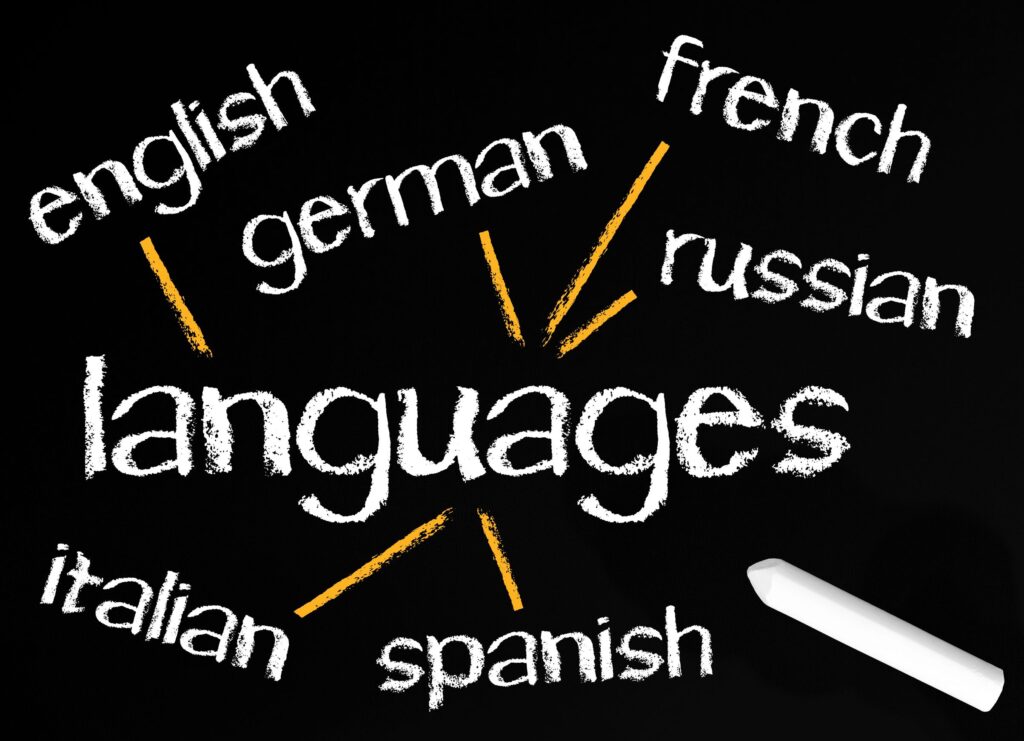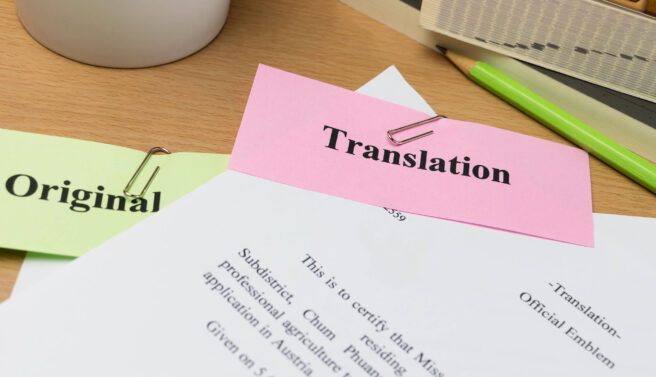According to its technical definition, language translations convert the written text into another language that is linguistically and culturally appropriate. Translations ensure that the intended audience understands the message.
The process requires the translator to have excellent grammar skills in a language pair, exceptional skills in composition, and the ability to research concepts and words. Beyond that, a translator must have cultural awareness, industry knowledge, and an in-depth understanding of relevant terminology, standards, and procedures. Translators must also have relevant experience and expertise in different fields so that they can be proficient at their chosen career.
Languages reflect diversity – of communities, cultures, and countries. Translations fill the gap to connect unique groups through mutual understanding.
Top five languages for disseminating COVID-19 information
Currently, the top five languages are English, Spanish, Chinese, Hindi, and French.
While it is critical to understand what is going on, and the pandemic continues to disrupt the world, the spread of misinformation and disinformation is rampant. This leads to the difficulty in finding accurate information that can save lives.
Accurate information should reach every person, especially information about prevention, quarantine, physical distancing, and basic health protocols. It is critical to reach the indigenous population aside from the top languages. They are more vulnerable because they do not have immediate access to updated information compared to other groups.
Although the virus does not discriminate, government and health officials are more concerned about the vulnerable communities where malnutrition and high levels of poverty are present. The right information about the pandemic should reach them, which means the information should be translated into different minority and indigenous languages. Access to information is part of human rights; thus, it is vital to have information about the pandemic in as many languages as possible.
UNESCO has prepared information kits about the virus. The organization’s website has a collection of public health messages, policy guidelines, and statements in a variety of indigenous languages.
Healthcare providers and systems, community organizations, health departments and public health professionals can view and download information about COVID-19 from the website of the Centers for Disease Control and Prevention (CDC). They can use the information to help disseminate information about the virus. The agency created a tool kit in over 30 languages.
Aside from a variety of information in different languages, UNESCO has also prepared a handbook to help journalists and other media practitioners train and understand the pandemic, and combat the misinformation and disinformation regarding the global problem. The handbook is available in 16 languages. They are having it translated in 26 other languages.
Several states in the U.S. are preparing information on COVID-19, basing the translations on the most spoken languages in their region. For example, Washington State has information and guidelines regarding the virus in 30 languages.
On the other hand, Doctors of the World provides patient advice regarding the corona virus in 45 languages.
COVID-19 has made healthcare organizations, agencies, governments, and healthcare acknowledge that language translation is an integral part of the response to the pandemic. Relevant organizations should also look into alternative information vehicle aside from translations. One research among Rohingya refugees living in Bangladesh, found that older women receive information regarding COVID-19 only from their male relatives. To effectively reach such groups, it is vital to identify the right communication channels.
Role of ASL in disseminating health information
Translators face the challenge of translating healthcare guidelines today since some of the terms are difficult to translate in indigenous and minority languages. Some health alliances have developed other ways to reach as many people as they can. In Guatemala for example, they are using translators to translate informational materials in different Mayan languages that they can broadcast over the radio, which is the fastest way to reach far-flung communities.
However, it is not only the indigenous and minority populations that need translated information on the global pandemic. People with speech and hearing deficiencies need to be up to date regarding the pandemic as well. They need to understand what to do, especially in practicing basic health protocols to prevent infection and disease transmission.
Many news and public service programs on television today employ ASL interpreters to ensure that people who are deaf, mute, and hard of hearing who are confined in their homes can understand the news.
Importance of localizing health information
So many information on COVID-19 is available online. But it is difficult for people to determine which one is accurate. Many of the online information is in English. Thus, websites of concerned agencies, healthcare organizations, and public health information offices must be localized. It is a big undertaking, but it is essential since countries have diverse populations, many of which do not speak the official language.
It is vital to impart the most accurate information about COVID-19 that people will understand. Even if some people learned to speak English, for example, they prefer to read the information that affects their lives and the lives of their families in their primary language.
COVID-19 is not going away anytime soon. It is an emerging disease, so very little is known about it. Many stakeholders need to know and understand everything about the dreaded virus. As such vaccines for the disease are not yet available.
Public health communicators should be ready to inform local communities. They should have access to information that they need to know. They should be informed about the government’s response to the pandemic. They must know their responsibilities, what to do to avoid infection, when to seek medical help, and whatever updates are available. They need guidelines on what to do in case of an outbreak in their community and what will happen when the pandemic is over.
Proper planning and coordination, cooperation and communication are key factors in fighting the pandemic. Providing vital information in different languages through localization of healthcare information is a big step in winning the battle against the coronavirus.
Let us help you bridge the communication gap with localization
There are still many gaps in providing translations of vital healthcare information on the pandemic in various indigenous and minority languages. eTranslation Services provides accurate and high-quality medical translation and localization. We have native-speaking translators who are subject matter experts. They handle more than 200 languages, so you are assured that we cover many of the less-common languages. For your medical translation and localization projects, please send us an email at [email protected]. You can also reach us by phone at (800) 882-6058.



